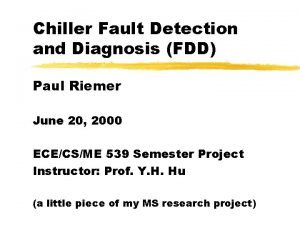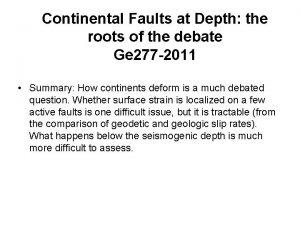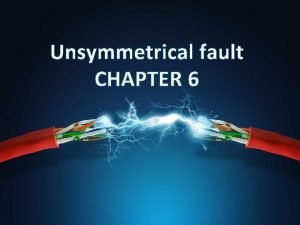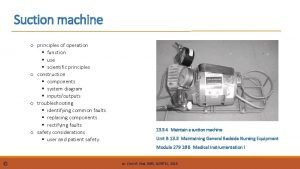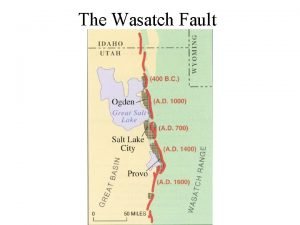Finding faults How to evaluate whether a fault






- Slides: 6

Finding fault(s) How to evaluate whether a fault is present in the subsurface or an area of poor exposure

Fault …. but may be n Abrupt lithologic change n Abrupt change in orientation of bedding or foliation n In both cases, look for evidence of fault-zone deformation with proximity to contact n Nonconformity - look for evidence such as basal conglomerate n Angular unconformity (see above) or Fold (look for lithologic continuity)

Use of stratigraphy n Faults can cut out (omit) or stack (repeat) stratigraphic intervals. Stratigraphic omission or repetition can be evident through mapping or drill core.

Sense of slip in the absence of piercing points Relative ages of hanging wall and footwall materials constrains sense of slip n Metamorphic grade of hanging versus footwall constrains kinematics n

Heterogeneity and anisotropy n n n Fractures typically nucleate on heterogeneities (e. g. , fossil) Low-angle reverse, or thrust, faults localize in mechanically weak layers such as shale and evaporite. They cut across stronger layers in short steps As long as it is favorably oriented, it is apparently energetically easier to reactivate an existing fault than create a new one

Pattern has meaning n n n Large-scale fault patterns reflect tectonic environments (plate movements) Patterns reflect most energetically favorable response to imposed displacement We will look at overall strains and patterns of faulting in a different order than indicated in syllabus: extensional, transcurrent, then contractional regimes

